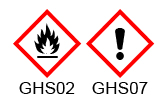As a distributor of ethanol with the CAS number 64-17-5, HVL supplies the industry with denatured ethanol in various qualities by road tanker. Whether REN, industrial, agricultural, neutral, 96 vol. % or 99.9 vol. %, you have come to the right place. Common denaturants are methyl ethyl ketone, petroleum ether, toluene and cyclohexane or according to regulation (EC) No 3199/93 complete with 1 litre of isopropyl alcohol (IPA), 1 litre of methyl ethyl ketone (MEK) and 1 gram of denatonium benzoate per 100 litres of pure alcohol. Other names are ethyl alcohol, alcohol, spirit of wine or spirit. Bioethanol is ethanol produced exclusively from renewable biomass. Chemically, there is no difference between bioethanol and ethanol produced in a different way.
Available qualities
Ethanol Industrial 96 vol. % / 99.9 vol. % in various denaturations
Ethanol REN 96 vol. % / 99.9 vol. % in various denaturations
Ethanol agricultural 96 vol. % / 99.9 vol. % in various denaturations
Product details
General
CAS number
64-17-5
EC number
200-578-6
EC Index Number
603-002-00-5
HVL REACH
01-2119457610-43-XXXX
Other names
Ethyl alcohol
Ethanol
Ethyl alcohol
Wine spirit
Spiritus
EtOH
Sum formula
C2H6O2
Hazard pictograms

Hazard warnings
H225 Highly flammable liquid and vapour
H319 Causes severe eye irritation
Safety instructions
P210 Keep away from heat, hot surfaces, P233 sparks, open flames and other ignition sources. Do not smoke.
P233 Container tightly closed.
P241 Use explosion-proof [electrical/ventilation/lightning] equipment.
P280 Wear protective gloves/protective clothing/eye protection/face protection/Wear ear plugs.
P305+P351+P338 IN CONTACT WITH THE EYES: Rinse gently with water for a few minutes. Remove any contact lenses if possible. Continue rinsing.
Emergency number
+49 (0) 761 19240 (Poisoning Information Centre Freiburg)
Usage
Ethanol has a wide range of applications. The main quantity today is likely to be blended with conventional fuels as fuel ethanol. Ethanol is consumed in the production of alcoholic beverages. In cosmetics as a carrier for odorous substances (perfume, deodorant, fragrance spray). In medicine as a disinfectant. Many liquid medicines contain ethanol as a solvent, as the active substances do not dissolve in water itself. Ethanol is thus an important carrier substance in the production of herbal medicines. In the household as a cleaning agent for glass, for example. In the car, we use ethanol in the form of windscreen antifreeze in winter as a cleaning and antifreeze agent. As fuel in the fireplace, as grill lighter or in fuel pastes. In the chemical industry as an intermediate product. An important downstream product is ethyl chloride, which is produced from ethanol by reaction with hydrogen chloride. The oxidation yields other secondary products such as acetaldehyde and acetic acid.
Physical and chemical properties
Aggregate state
Liquid
Colour
Colourless
Odour
Characteristic depending on quality and denaturant
pH value (10g/l, H₂O, 20°C)
6,5 – 7,5
Melting point/freezing point
-114 °C
Boiling point
78,5 °C
Flash point
13 °C
Ignition temperature
400 °C
Vapour pressure at 19,6°C
57,26 hPa
Density at 20°C
0,789 g/cm³
Viscosity, dynamic at 20°C
1,17 mPas
Transport information
Dangerous goods.
UN number
UN1170
Transport hazard class
3 Flammable liquid substances
Packaging group
II
related products
ANY QUESTIONS? GET IN TOUCH WITH US!
Haven’t found the information you were looking for? No problem! Call us or send us an email regarding your inquiry. We´re glad to help.

